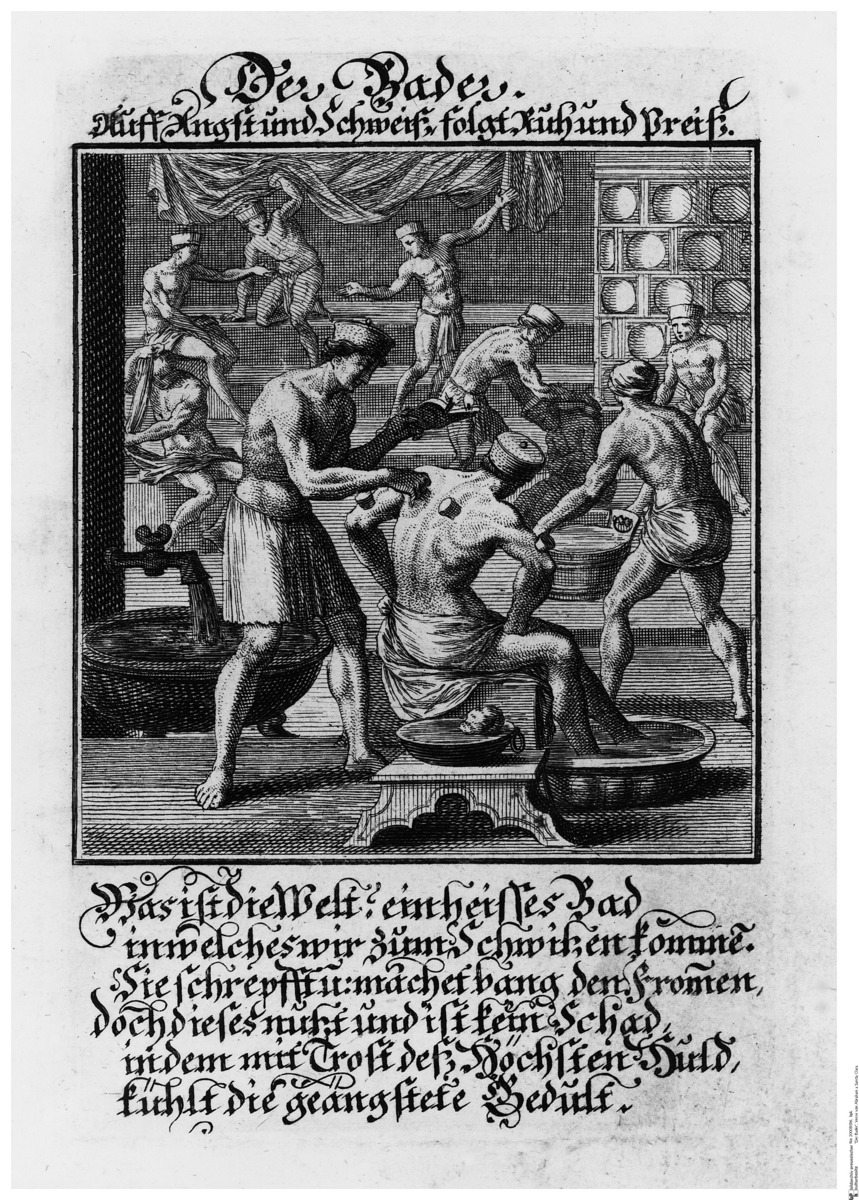Abstract
Bathers provided a range of services in early modern Europe. They
administered water and steam baths and served as hairdressers to clients
of municipally owned bathhouses. Beyond that, they performed surgical
operations and blood-lettings, and also applied leeches, as can be seen
in below. The scene takes place in a bathhouse, and the rhyming caption
likens life to a hot bath – specifically one that makes the pious person
sweat and fret. But the caption assures the reader that God’s grace
“consoles and cools” in the end. In the seventeenth century, the clergy
and the rising class of medical physicians (the barber-surgeons’ rivals)
increasingly condemned bathhouses for reasons of both morality and
hygiene. The emergence of spas with hot springs in the eighteenth
century contributed to the sharp and irreversible decline of the
bathhouse.
